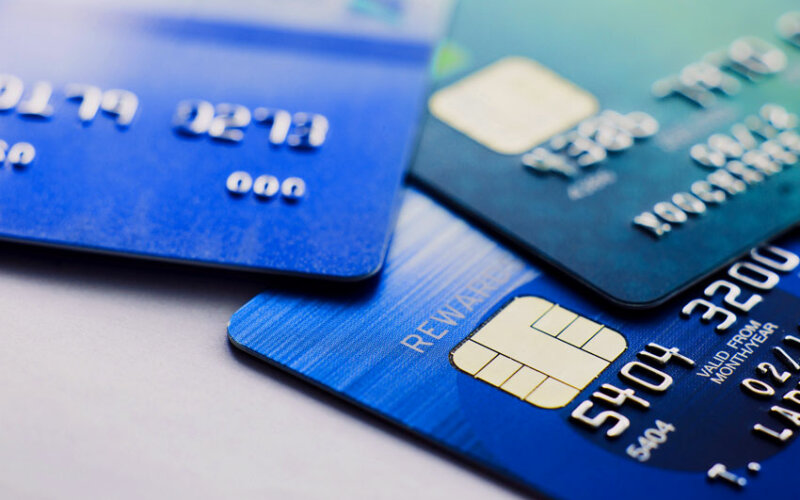According to the Bundesbank’s payment statistics, the number of credit cards issued1 fell by 6% (for so-called charge or delayed debit cards) and by 0.9% (for “real” credit cards with revolving credit) in 2021 compared to 2020. This is surprising at first glance. These figures have been growing steadily for years. What are the causes? In the neighbouring blog “Finanz-Szene”2 Christian Kirchner already sees a possible saturation in the credit card market and a trend reversal based on these figures. In the new issue of the magazine “Karten”3 , the editors speculate a crowding-out effect by “buy-now-pay-later” (BNPL) products. Should we start the swan song? You can try that in the shower, there are no reasons (yet?) for a collective singing.
Table of Contents
Turnover increases!
The most important counter-argument first. The payments volume (€) generated with these two credit card types increased strongly in 2021 compared to 2020:
- Charge Cards: +8.6%
- Revolving Credit Cards: +14.0%
Turnover has not yet reached the pre-Corona level of 2019, but the growth rates in Corona Year 2 are impressive. By the way, growth with debit cards was “only” 7.8%. I’ll come back to that in a moment. For a market analysis, one should orientate oneself on the decisive factor “payments volume””. The number of cards used for this purpose is secondary. There are many indications that the inactive or little-used cards will be eliminated as a result of rising cardholder fees: Efficiency gains and less plastic waste instead of market saturation.
Effects of cross-border issuing
Secondly, the importance of cross-border card issuance by issuers based in Germany and other European countries is also increasing in Germany. The Bundesbank’s statistics only show cards issued by issuers based here. Depending on the extent of cross-border issuing, the Bundesbank’s issuing figures may no longer be relevant as an indicator of card use by German cardholders. This also applies to other countries. In Lithuania, for example, the turnover of cards issued by domestic issuers increased by 174% in 2021. The main reason for this huge growth is not the spend-happy cardholders in Lithuania, but the Brexit-related move of some issuers from the UK to Lithuania, including Revolut. Most of the cards issued by Revolut are not used by Lithuanians, but by cardholders in other member states, including Germany. Without understanding the systematics of the ECB statistics, country figures can quickly lead to false conclusions regarding the respective national market development. Especially in the area of credit cards, cross-border issuing now plays a major role in Germany. The Luxembourg-based Advanzia Bank, for example, issues approx. 1.75 million cards (+7% compared to the previous year) to German cardholders (2021). This number and the associated payments volume show up in the statistics for Luxembourg. If Advanzia Bank were to relocate its headquarters from Munsbach (LU), currently only 16 km away, to the border town of Wincheringen (DE), the number of credit cards with credit function in the Bundesbank statistics would increase by a whopping 36%. Luxembourg, on the other hand, would lose about 90% in this segment. The cross-border relocation of a single issuer can therefore shake up the figures considerably. However, the role of this payment instrument in the national market would remain unchanged. The country-related ECB statistics gradually lose their reference to the national market due to the increase in cross-border issuing.
Back to the figures for Germany. If in 2021 a credit card issuer previously based in Germany had moved to another member state, not only the number of credit cards but also the turnover would have to have fallen. But that is not the case.
Competition from foreign issuers?
Thirdly: If one looks at the change in card numbers per segment, it is striking that not only at private banks, but also at savings banks and cooperative banks, the numbers of charge cards have declined by almost identical rates. Since savings banks and cooperative banks do not usually move abroad, the “move abroad” factor outlined above is ruled out, at least in these segments. Issuers based in Germany could, however, have lost market share to “aggressive” foreign issuers. Here, too, card sales would have to have fallen analogously. Perhaps only the “bad” cardholders with mini-turnovers have migrated to the foreign issuer.
Trend line shows growth.
Fourthly, not only because of the systematics of the ECB statistics, the national payment data of the central banks should be used with caution with regard to the development in national markets. Readers of my blog posts know my scepticism about the quality of the data material collected.4 Contradictory figures – also in the German figures – are obviously published without plausibility checks. So far, we have assumed that the decline in the number of credit cards is based on “correct” and thus realistic figures for 2020 and 2021.
Are the data plausible? Let’s take a closer look at the charge cards. The decline in 2021 (minus 6%) is only due to the fact that the figure in 2020 rose far above average at 10%. If there had not been this extreme growth in 2020 before, the 2021 figure would correspond to the medium-term trend line of continuous growth. An increase in the amount of 3.2 million charge cards in one calendar year – as allegedly in 2020 – has never happened in Germany before. In the same year, the paymentsby these cards – due to lockdowns – collapses by almost 20% overall. Purchases at physical locations and e-commerce (minus 10%) as well were affected. Now, the benefit of a credit card comes mainly from its use as a means of payment. The times of the credit card as a status symbol are over. Therefore, the question is: why is there a massive increase in demand for a product and a simultaneous drastic decline in its use? Perhaps during the first lockdown, it was the newcomers in the digital shopping world who thought that nothing would work without a credit card. With the Netflix subscription, at the latest, they realised that you can pay conveniently with PayPal or direct debit without a credit card. The card was then cancelled after one year in 2021. I can’t think of any other plausible explanation – except that the Bundesbank figures on the number of credit cards are simply incorrect.
My conclusion:
The credit card business, which was significantly affected by the 2020 lockdowns, has largely recovered. Usage increased by 9% in 2021. The portfolio was cleansed of inactive cards through clever pricing policies. Market saturation in terms of crucial usage is not discernible.
My prediction:
The recovery could be over by 2022. The next storm is already bearing down on us. Due to inflation and the energy crisis, the HDE consumer barometer is already lower in late summer than in the Corona spring of 2020.5 The economic crisis, the peak of which is not yet foreseeable, will have a considerable impact on the credit card business.
ELV and cashback as growth drivers for debit cards
The growth in the debit card sector in Germany is unbroken. Not even Corona was able to slow down the growth. On the contrary, turnover rose by 15.5% in 2020. The number of debit cards, issued by payment service provider based in Germany rose by 2.5% to 121.3 million in 2021, however the volume of payments of these cards increased by 7.8% (source Bundesbank). The growthrate of payment volume has therefore halved in 2021 compared to 2020.
Approximately 88% of the turnover is generated by the German Girocard. The rest is turnover with Mastercard and Visa debit cards. ELV turnover with the Girocard is not included in these figures. Peu à peu, however, the Girocard is losing market share to competition from international card schemes. The market share on a payments volume basis was still 91% in 2019.
Deutsche Kreditwirtschaft (DK), as the system owner, almost rolls over with regular success stories. For 2021, it reported growth of 7.2%. However, DK does not mention two important growth drivers in its press releases6. Firstly, the Girocard has replaced ELV payments made with the same card to a considerable extent every year since 2018. ELV turnover has halved since then. Secondly, the Girocard statistics continue to include most cash withdrawals, made at the POS (cashback) using this card. This Girocard “payments” volume is growing rapidly. With an estimated volume of more than 2% of Girocard payments volume, this growth factor is now statistically significant. According to our calculations, which we will publish in the next PaySys report, the “real” or natural growth of the Girocard in 2021 was approx. 4.4% (instead of 7.2%). The rest is ELV substitution and cashback.
Goodbye Card?
Despite relativisations: Debit and credit cards currently show no signs of market saturation in Germany.
Some futurists in the payment industry are already predicting the end of the card era, regardless of whether it is debit or credit. (Instant) account-to-account payments (A2A) would displace card payments at the POS and in e-commerce. Projections for the share of the cashless pie vary from 25% to 50% for 2030. Add in the fantastic projections of the hyped BNPL payment, and we’ll probably be doing mostly A2A or BNPL in 2030. What to say to that? The best answer is Wilhelm Busch: First, things turn out differently, and second, things turn out differently than you think.
[1] In common parlance and in the non-specialist press in Germany, “credit cards” are usually understood to be the cards with the brands of the international card procedures Amex, Mastercard and Visa. In this article, the terms credit and debit card are based on the statistical definitions of the ECB, which largely correspond to the legal definition of the EU Interchange Fee Regulation (2015).
[2] https://finanz-szene.de/payments/trendumkehr-nach-jahrzehnten-zahl-der-kreditkarten-sinkt-drastisch/
[3] https://www.kreditwesen.de/cards/themenschwerpunkte
[4] https://paytechlaw.com/zahlenmystik-zahlungsverkehrsstatistiken/
[5] https://einzelhandel.de/konsumbarometer
[6] https://www.girocard.eu/presse-mediathek/pressemitteilungen/2022/girocard-jahreszahlen-2021/




